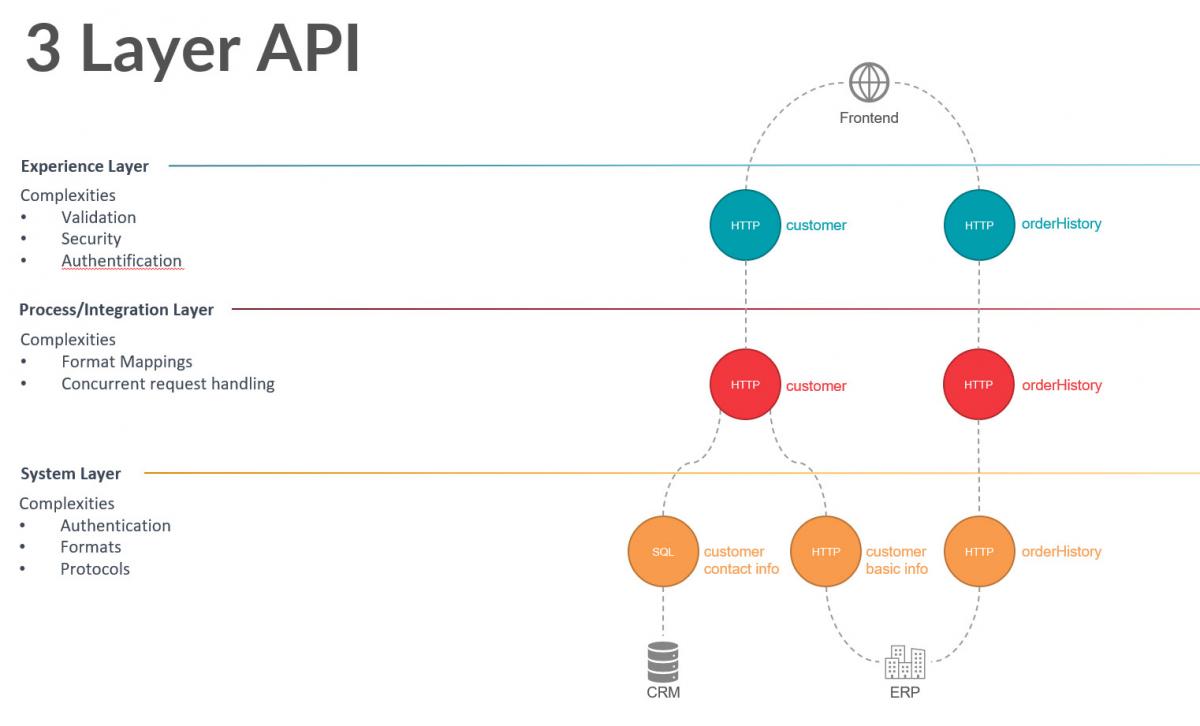If you haven’t already, please find my two first blogs in this series, where I introduce and explain the Digital Integration Hub (DIH):
So now we have a very overall idea of what the DIH is, and how it differs from Enterprise Service Buses (ESB) and Integration Platforms as a Service (iPaaS), but why do I want one?
Back in the day, when I took my masters in IT and Administration a well implemented ERP system was recognized as a competitive advantage due to the centralized data and process model. All companies were implementing single instance ERP systems like the SAP suite. This meant that the systems became more and more complex as change and implementation projects grew out of hand.
Since then, most companies have moved from a best of suite to a best of breed thinking when choosing software and have been implementing cloud based SaaS solutions which drives an ever growing need for system integrations. The DIH breaks the linear connection between integration needs and integration effort/cost with the following benefits:
-
Increased agility: A DIH can help organizations quickly respond to changing business requirements by enabling the rapid integration of new applications and data sources.
-
Improved data quality: A DIH can help ensure that data is standardized and consistent across the enterprise, leading to better decision-making.
-
Enhanced security: A DIH can help ensure that data is securely shared and accessed only by authorized users.
-
Reduced costs: A DIH can help reduce the cost and complexity of IT projects by eliminating the need for custom integrations between different systems.
To be honest these benefits sound awfully a lot like the promises of the SOA platforms but there are a few key differences that makes the promises achievable. We always strive for reuse of data and process components when implementing integration. The challenge is that the objects very quickly become use case specific.
So, the customer API that is exposed in a project will contain the data and operations needed for the project solution, but very rarely the complete picture of the customer and even worse often also a few data entities not belonging to the customer domain but needed in the project. With the digital integration hub we modulate the customer API in the persistency layer of the DIH, where we have the complete business model of the customer data entity which can be based on multiple data sources.
For the specific project we just expose an extra experience API that is use case specific. That means that we create generic data objects in order to freely expose specific APIs – and this is the big difference. So, in essence the DIH enables the three-layer API architecture, but with much more performance and flexibility.
See example figure below:

The power of DIH
My favorite example that shows the power of the DIH is from a current customer. We had implemented a DIH solution, where we combined customer, order and service data into a solution used for a customer portal. Shortly after go-live, the sales team of our DIH customer came and said they could land a huge deal, if we could integrate order and service data into the new customers SAP Plant Maintenance system by calling two APIs exposed by the new customer.
After looking at the data foundation in the DIH we realized that a quick composition of the current data flows, we could provide the needed data in near real time for the customer. This new solution was implemented and live after two days of development and test!!!
If something sounds too good to be true, it probably is. Above case is true, but the DIH comes with challenges that needs to be tackled.
-
Integration complexity: Implementing a DIH can be complex, as it involves integrating multiple systems and data sources with varying levels of complexity and maturity.
-
Data governance: A DIH requires strong data governance practices to ensure that data does not fall in the hands of non-authorized people.
-
Build or buy: Should you build or buy a DIH platform. No matter what you do, there are challenges in terms of resources, vendor login and the risk of building technical debt.
Support your digital business
Truly the DIH is not an easy implementation, but it still is the best way to support your digital business with data and process objects as the needs arise. Our experience is that it can be done in many ways, and with the right team it does not have to be a huge undertaking. Often we find, that our customers can build upon already existing solutions



